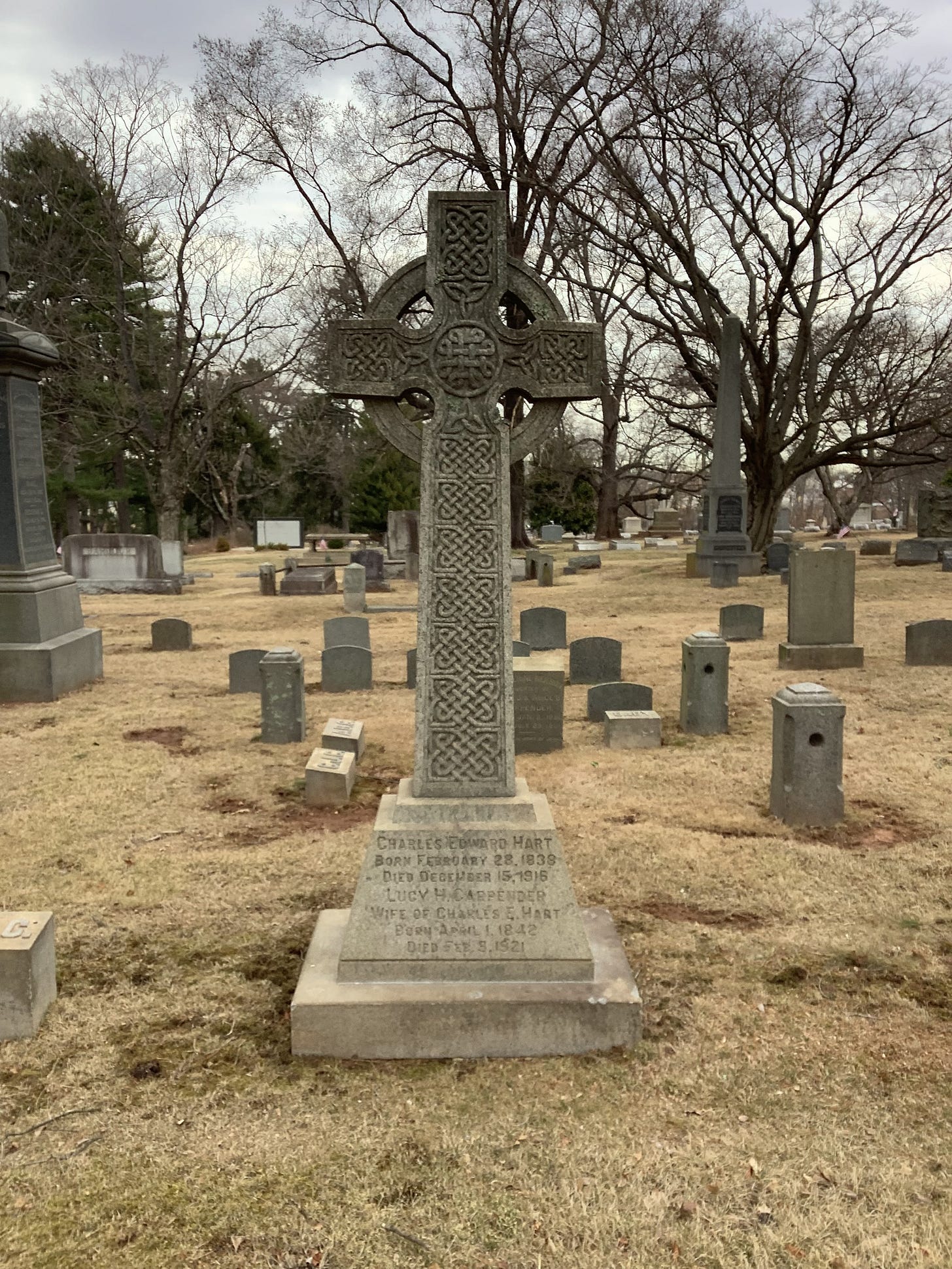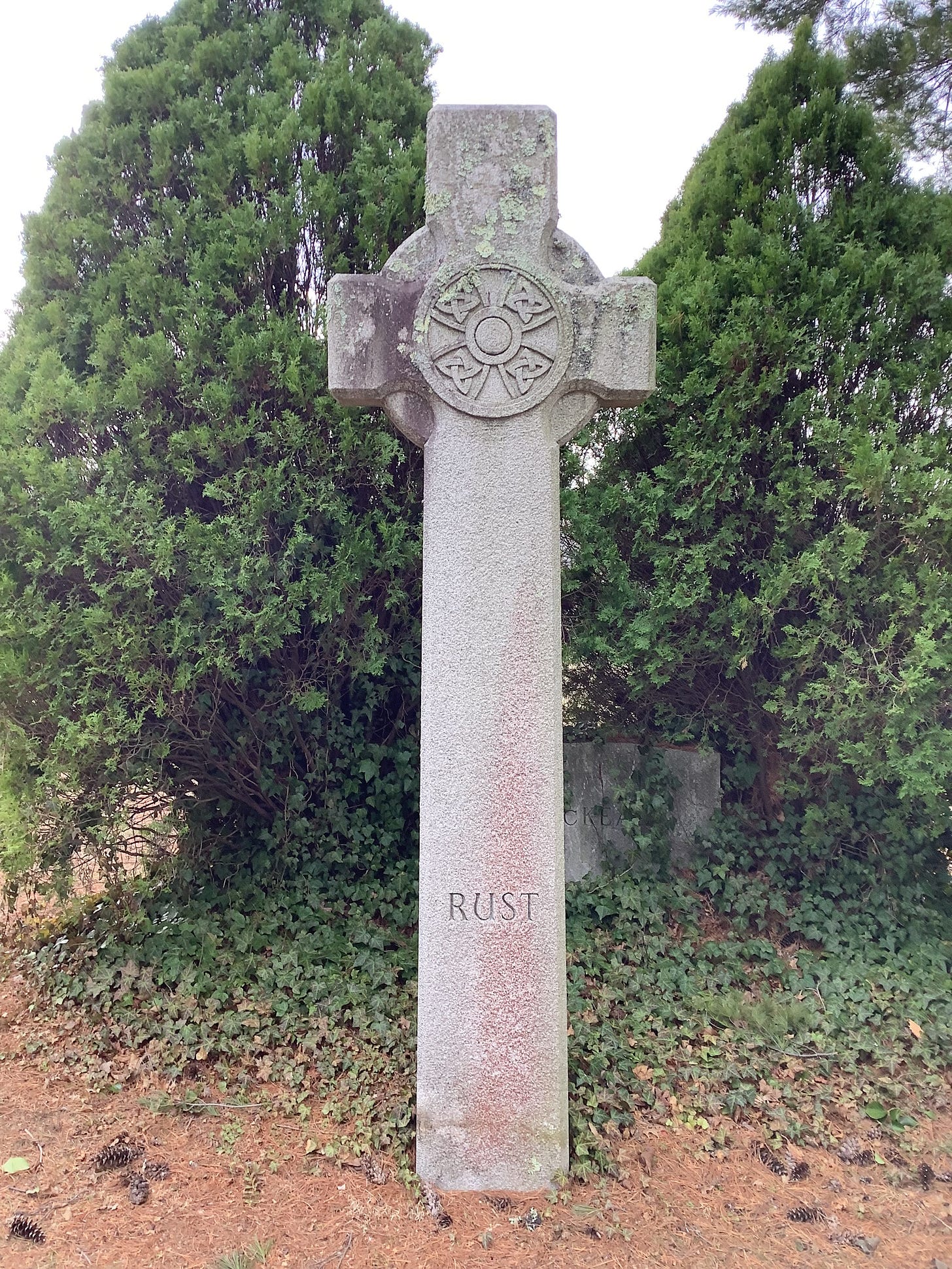Seeing as yesterday was Saint Patrick's Day, we at Elmwood thought it would be a fine time to highlight some interesting connections to Ireland that cemeteries such as Elmwood have. While we have multiple Irish-descended families that we could talk about, today I wanted to look at a classic symbol of Irish identity, the Celtic Cross.
The Celtic Cross, sometimes known as the Irish Cross, is a cross with a ring around the center of the head of the cross. The origin of the Celtic Cross is unclear; many sources suggest it may be derived from a pagan symbol that existed throughout Europe, while other sources believe it to have begun primarily as a Christian symbol in the early middle-ages. Regardless of its origin, it today holds dual symbolism as Chrsitian emblem and as a symbol of Irish identity.
Many ideas have been proposed as to why the Celtic Cross became such a prevalent alternative to a standard, traditional cross. Scholars have noted that from an architectural standpoint, the ring offers structural support for the arms of the cross. This has led many to wonder if perhaps this was an element lifted from earlier wooden crosses which might have needed this structural support.
This reasoning might explain why Celtic Crosses became very popular as granite monuments in the 19th century even among non-Irish individuals; granite was a relatively new material for monuments at the time, and it is possible that the perceived structural superiority of the Celtic Cross may have provided some peace of mind to those who were unsure of the quality of granite (it is worth noting that today granite is widely considered the most durable stone that monuments can be made of).
Alternatively, many believe the ring may have religious significance either as a representation of the halo of Christ or as a symbol of God’s endless love. Of course, these are just a few theories out of many, and it seems unlikely that we will ever truly know the full origin of the Celtic Cross. No matter what the history, the Cross certainly took on a religious connotation in Ireland. The most impressive Celtic Crosses were decorated with etchings and carvings representing moments from the Bible.
The traditional Celtic Cross can be found throughout Britain and France as well as Ireland, so how did this symbol come to be so heavily associated with the Irish? Well, while many Celtic Crosses appeared in churches and abbeys, by the 12th century these crosses began to appear all over Ireland, serving as boundary and territorial markers. Consequently, it was hard to go anywhere in Ireland without seeing a Celtic Cross.
Additionally, In the mid-19th century, around the same time that Elmwood Cemetery was founded, there was a Celtic Revival in Ireland, with many traditional symbols of Celtic culture receiving renewed interest. The Celtic Cross, in particular, became a popular icon amongst artisans making jewelry, which made necklaces featuring the cross. In the Anglo-sphere this revival led to an aesthetic interest in these symbols, and the Irish diaspora that would come to these nations adopted the Celtic Cross as a symbol of Irish identity.
Elmwood Cemetery has multiple Celtic Crosses in the cemetery, as do many other cemeteries. Truthfully, compared to other cemeteries in the area, Elmwood may actually have fewer. This isn’t so surprising when you consider that Elmwood Cemetery is a non-sectarian cemetery. While we have people of almost every religion at the cemetery, consequently iconography like the Celtic Cross just isn’t as prevalent at Elmwood as other cemeteries. In fact, many of the Celtic crosses in the cemetery don’t even belong to Irish families at Elmwood. This is in contrast to Catholic cemeteries, where many Irish immigrants to this region would have been buried. They have more Celtic Crosses proportionally than Elmwood.
Another reason that some cemeteries such as Elmwood may not have as many Celtic Crosses is simply due to changing standards about displaying religious symbols. Many cemeteries have or had rules regulating how much religious iconography may be used on religious monuments. Similarly, at different times throughout history the desire to have large religious monuments has fluctuated in terms of popularity, which may explain why there may be fewer Celtic Crosses being installed in a cemetery at any given time.
What Elmwood lacks in quantity, it certainly makes up for in quality. The Celtic Crosses we have in the cemetery reflect people of different backgrounds, circumstances and material wealth. Elmwood Cemetery has been praised by many as a great repository of granite statuary, as the cemetery began during a period of time where granite was replacing other stones, such as marble and limestone, in popularity. In this context, it may not be surprising that monument dealers were offering to carve these Celtic Crosses as a chance to demonstrate their skill. Whatever the reason why we have these crosses, we are proud to display these icons of Irish culture.
Sources:
Camille, Michael. Imagining an Irish Past: The Celtic Revival, 1840-1940. United Kingdom: David and Alfred Smart Museum of Art, 1992.
“Meaning of the Celtic Cross.” Blarney Woollen Mills. Accessed March 17, 2025. https://www.blarney.com/celtic-cross-meaning/.
Vipond, Ciaran. “The History, Meaning and Symbolism of the Irish Celtic Cross.” My Irish Jeweler, March 22, 2024. https://www.myirishjeweler.com/blog/irish-celtic-cross-history/?srsltid=AfmBOor7JZcA5WpHZzu0o7uGbOHn3zT0VZinY3aUGub06nAlQLUKgFyC.
Walker, Stephen. “Celtic Revival Crosses.” Celt Arts, April 2002. http://www.celtarts.com/revival_crosses.htm.





